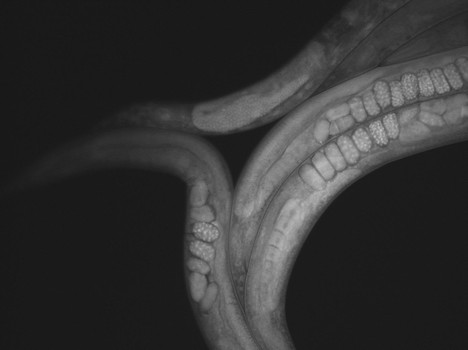An elite group of worms called Caenorhabditas elegans is scheduled to make the flight to the International Space Station in order for scientists to learn more about the effects of long-term low gravity on humans. The Earth-side of the investigation was presented by Chandran Sabanayagam with the University of Delaware at the annual meeting of the Biophysical Society in Baltimore, Maryland. The results of the experiments on Earth indicate potential genetic changes for worms and humans during long space voyages.
The researchers used a process called a clinorotation to simulate the microgravity on the International Space Station. The worms were chosen because they have DNA that is 70 percent the same as humans. The worms were selected because the microscopic worms are easy to transport and reproduce quickly.
The researchers learned that worms grown in normal lab conditions experience ten times the gravitation that worms exposed to clinorotation did. The worms changed genetically. The changes in genes that control reproduction and muscle development were found to be the most prevalent direct genetic change.
The worms exposed to low gravity conditions for long periods of time produced offspring that retained the genetic changes the worms developed. The low gravity in essence sped up evolution. The researchers selected 100 genes that are common to men and worms to monitor when the worms go to the ISS. There are several science fiction films that show changes in humans on long space voyages. The science fiction has again proven to be much closer to fact than first thought.















